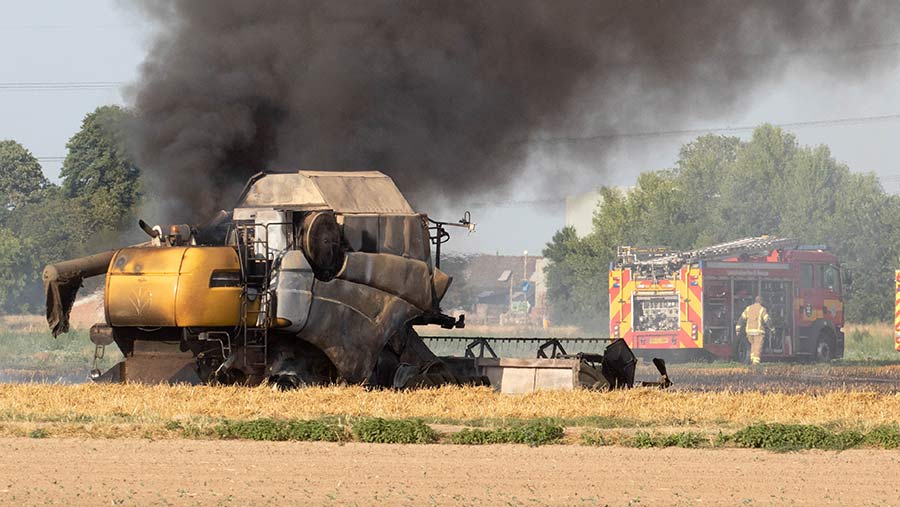Farm fire costs hit four-year high
 © Tim Scrivener
© Tim Scrivener The cost of farm fires rose to £46.4m in 2018 – a four-year high and up by 27.5% on the previous year.
Rural insurer NFU Mutual said 2018’s hot summer weather and drought created tinder-dry conditions that caused the devastation in the countryside. However, electrical faults were still the most common cause of fires.
These conditions and an early harvest left UK farmers vulnerable, with dry crops and overheating farm machinery. July costs alone saw an increase of more than 350% compared with the same period the previous year.
Much of that rise was seen in the east of England, where crop fires contributed to a 225% rise in incidents compared with 2017. The cost to farm businesses in the east amounted to £11.1m, almost one-quarter of the UK’s total bill.
Scotland was the second worst-affected area at £7.6m, followed by the south-west of England with costs of £7.2m.
See also: Arson attack latest in list of crimes to hit Oxfordshire farmer
More than one-third (37%) of UK farm fires were caused by faulty wiring, the insurer’s figures show. Other major causes were fires spreading from elsewhere such as a barn or homestead at 23% and arson, which was to blame for one in five blazes.
Rebecca Davidson, NFU Mutual rural insurance specialist, said: “Fire remains one of the greatest risks to the lives and property of farmers.
“Our latest figures serve as a crucial reminder to be alert to the danger and have plans prepared and shared with family members and staff.”
Ms Davidson added: “It is possible to manage the risks by taking all possible steps to prevent fires breaking out, and to have clear plans in place to evacuate people and livestock safely in the event of a fire.”
NFU Mutual risk management services managing director Ian Jewitt advised farmers to schedule regular safety checks of electrical equipment to help minimise risks.
“Consider fencing off straw stacks and farm buildings to discourage arsonists and make it harder for fires to spread by keeping hay and straw at least 10m away from farm buildings.”
He urged farmers to keep fire extinguishers in good working order and make sure staff and family know where to find firefighting equipment and how it should be used.
| NFU Mutual farm fire claims cost by region (£ millions) | |||
| Region | 2018 | 2017 | Cost change (%) |
| East | 11.1 | 3.4 | 224.5 |
| Scotland | 7.6 | 4.0 | 89.8 |
| South West | 7.2 | 6.4 | 13.7 |
| South East | 5.9 | 4.1 | 42.9 |
| North East | 4.7 | 4.0 | 15.8 |
| Midlands | 4.3 | 5.3 | -19.6 |
| North West | 3.2 | 3.9 | -19.2 |
| Northern Ireland | 1.6 | 1.6 | 1.7 |
| Wales | 0.9 | 1.3 | -31.8 |
NFU Mutual farm fire checklist
- Fire prevention: Ensure there are sufficient fire extinguishers for the size of buildings and that materials stored are inspected and regularly maintained
- Ensure staff and adult family members know the location of fire extinguishers and how to use them
- Reduce arson risk by fencing off straw stacks and farm buildings
- Store hay and straw at least 10m from other buildings
- Have an evacuation plan for staff and livestock
- Store petrol, diesel and other fuels in secure areas
- Schedule regular electrical safety checks
- Invite your local fire and rescue service to visit to check water supplies and access routes
- If a fire breaks out, call the fire and rescue service without delay
- If possible, send someone to the farm entrance to direct the fire and rescue service to the fire to help save time
- Prepare to evacuate livestock should the fire spread
- Prepare to use farm machinery to help fire and rescue service
- Use the What3Words app to guide emergency services to the exact location of the fire
